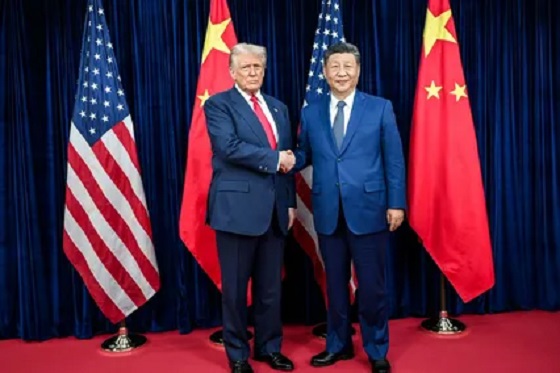International
New York Times publishes chilling new justification for assisted suicide

From LifeSiteNews
Even happy, healthy lives without major issues can warrant needless ending if they are ‘complete.’
Notorious secular “ethicist” Peter Singer has co-authored an opinion piece in The New York Times positing a chilling new rationale for assisted suicide: the determination that one’s life is simply “complete.”
Princeton psychologist Daniel Kahneman died in March 2024 at age 90. His cause of death was not disclosed at the time, but a year later, The Wall Street Journal revealed that Kahneman had emailed friends the day before to tell them he was traveling to Switzerland to avail himself of the country’s legal physician-assisted suicide.
“I think Danny wanted, above all, to avoid a long decline, to go out on his terms, to own his own death,” WSJ journalist and longtime friend of the deceased Jason Zweig wrote. “Maybe the principles of good decision-making that he had so long espoused — rely on data, don’t trust most intuitions, view the evidence in the broadest possible perspective — had little to do with his decision.”
On April 14, The New York Times published a guest essay by the infamous Singer, a pro-infanticide Princeton bioethics professor, and philosophy professor Katarzyna de Lazari-Radek, who shared that they too knew of Kahneman’s plans and that days before he had told them, “I feel I’ve lived my life well, but it’s a feeling. I’m just reasonably happy with what I’ve done. I would say if there is an objective point of view, then I’m totally irrelevant to it. If you look at the universe and the complexity of the universe, what I do with my day cannot be relevant.”
“I have believed since I was a teenager that the miseries and indignities of the last years of life are superfluous, and I am acting on that belief,” Kahneman reportedly said. “I am still active, enjoying many things in life (except the daily news) and will die a happy man. But my kidneys are on their last legs, the frequency of mental lapses is increasing, and I am 90 years old. It is time to go.”
Singer and de Lazari-Radek argued that this was an eminently reasonable conclusion. “(I)f, after careful reflection, you decide that your life is complete and remain firmly of that view for some time, you are the best judge of what is good for you,” they wrote. “This is especially clear in the case of people who are at an age at which they cannot hope for improvement in their quality of life.”
“(I)f we are to live well to the end, we need to be able to freely discuss when a life is complete, without shame or taboo,” the authors added. “Such a discussion may help people to know what they really want. We may regret their decisions, but we should respect their choices and allow them to end their lives with dignity.”
Pro-lifers have long warned that the euthanasia movement devalues life and preys on the ill and distraught by making serious medical issues (even non-terminal ones) into grounds to end one’s life. But Singer and de Lazari-Radek’s essay marks a new extreme beyond that point by asserting that even happy, healthy lives without major issues can warrant needless ending.
“Instead of seeing every human life as having inherent value and dignity, Singer sees life as transactional: something you are allowed to keep by being happy, able-bodied, and productive — and something to be taken away if you are not,” Cassy Cooke wrote at Live Action News.
In America, nine states plus the District of Columbia currently allow assisted suicide. In March, Delaware took a step closer to becoming the 10th with its own legalization bill, although it has yet to become law. Another bill recently failed in Maryland.
Support is available to talk those struggling with suicidal thoughts out of ending their lives. The Suicide & Crisis Lifeline can be reached by calling or texting 988.
International
US Reportedly Weighing Military Strikes On Narco Targets Inside Venezuela


From the Daily Caller News Foundation
The U.S. is mulling military strikes on cartel-associated targets in Venezuela, multiple sources told the Wall Street Journal Thursday.
The possible strikes would reportedly include among the targets Venezuelan military airports and seaports involved in the illicit drug trade. They would serve an additional purpose of warning dictator Nicolás Maduro he should step down from power, sources with knowledge of the matter told the WSJ.
The strikes could reportedly happen in a matter of days or hours, sources with knowledge of the situation told the Miami Herald Friday. President Donald Trump has stepped up his pressure campaign against the South American leader, taking a more forceful military posture than during his first term.
Dear Readers:
As a nonprofit, we are dependent on the generosity of our readers.
Please consider making a small donation of any amount here.
Thank you!
Most recently, the USS Gerald Ford carrier strike group was deployed to the Caribbean Sea October 24, adding to an already impressive U.S. presence off the Venezuelan coast in international waters. The Trump administration deployed naval assets to the southern Caribbean in August following their designation of Latin American cartels as Foreign Terrorist Organizations (FTOs).
The White House told the Daily Caller News Foundation that the anonymous sources reporting the story “don’t know what they’re talking about,” and that “any announcements regarding Venezuela policy would come directly from the President.”
International
Netanyahu orders deadly strikes on Gaza with over 100 dead despite ceasefire deal

From LifeSiteNews
Despite a majority of national governments and Christian prelates demanding a two-state solution, experts warn that Israel and the US aim to crush all hope for a Palestinian state.
After killing 104 Palestinians, including 46 children and 20 women with aggressive overnight airstrikes, Israel announced Wednesday that it was resuming observation of its ceasefire deal with Hamas that was penned earlier this month.
Israeli Prime Minister Benjamin Netanyahu ordered the Israeli army on Tuesday to “immediately carry out forceful strikes in the Gaza Strip,” signaling a collapse of the October 10 agreement brokered by U.S. President Donald Trump.
Israel claimed the strikes were retaliation for its forces coming under fire from Hamas fighters in the southern city of Rafah. And though Palestinian sources reported hearing gunshots and strikes in the area, Hamas stated they had “no relation to the shooting incident” and reaffirmed their “commitment to the cease-fire agreement.”
Though the Israeli army has currently taken control of 58% of the Gaza Strip, local media reported a decision of the prime minister to expand its occupation to more land in response to the reported attack.
Following Netanyahu’s order, a series of Israeli strikes were reported in Gaza City, Rafah and later Khan Younis. These included one “massive” explosion near al-Shifa Hospital with and Al Jazeera correspondent reporting from the ground “major activity in the air over Gaza’s skies, with drones hovering above.”
Israeli bombardment targets also included a refugee camp in central Gaza, homes and tents with additional injury numbers logged at 253, including 78 children. With no medical supplies or medicines to treat the wounded, the hospital director at al-Shifa said the health situation was “catastrophic.”
Netanyahu’s strike order also followed an accusation from the Israeli government that Hamas was in violation of the ceasefire due to their delaying the return of bodies of deceased hostages. But before the agreement being signed, Israeli officials acknowledged it may take significant time to locate and return these corpses and CNN quoted Israeli officials who acknowledged some of the bodies may never be returned.
Additionally, according to Al Jazeera, while Israel maintains pressure on Hamas to return these bodies, the Palestinian militant group continues to call on Israel to allow the entry of heavy bulldozer equipment for facilitating this process since some of these bodies are believed to be buried deep under the rubble of buildings destroyed by Israeli bombardments.
Israel violates ceasefire 125 times, kills hundreds with Trump’s support
Even prior to the Israeli army reporting one reservist soldier being killed in the Rafah attack on Tuesday, from unidentified assailants, the Gaza-based Government Media Office had tallied 125 breaches of the ceasefire agreement by Israel which claimed the lives of 107 Palestinians and wounded nearly 350.
Israel has additionally violated the ceasefire agreement by allowing only a fraction of the agreed-upon number of humanitarian aid trucks to enter the enclave that had been officially declared by a UN agency in August to be suffering under a man-made famine.
A further violation of the deal includes Israel’s decision to keep the Rafah crossing with Egypt closed preventing tens of thousands of critically wounded Palestinians to seek medical treatment abroad because Israel has all but completely destroyed the health care system in Gaza. According to reports, thus far 983 patients have died while waiting for the permission from Israel to travel abroad for treatments.
Trump backed Israel’s massive strikes, which killed dozens of children, saying they had a “right to (retaliate)” due to the killing of the Israeli soldier, maintaining that these many violations would not jeopardize the ceasefire agreement.
Ceasefire deal ‘scam’ to retrieve Israeli hostages; Trump complicit with genocide
In a Wednesday interview with Judge Andrew Napolitano, former U.S. Marines Officer, author, and military commentator, Scott Ritter classified the Tuesday bombings as Israel sending “a signal that they are the permanent occupiers, that even under ceasefire conditions, Israel retains the right to strike anytime, anyplace against anyone without any fear of consequence.”
He expressed his belief that Hamas is “serious about this ceasefire agreement” while Israel is not, that the current ceasefire plan is merely a “scam to get the Israeli hostages home” before “finish(ing) the job,” of genocide in Gaza as a means of preventing any possibility of a Palestinian state.
He further assessed that since “the genocide that Netanyahu is carrying out in Gaza couldn’t have been done without the support of Donald Trump and the United States. So, Donald Trump is as guilty for the deaths of the Gazans in Palestine and Gaza as Netanyahu is.”
Solution to conflict affirmed by 96% of world’s nations: establishment of sovereign State of Palestine
In initially evaluating the current ceasefire agreement on October 9, Columbia University economist and senior UN adviser Jeffrey Sachs stated that the solution to the conflict is “very straightforward” and has been affirmed by the “the world community, overwhelmingly, for decades” and this is the call “for a State of Palestine.”
By “massive votes” in the UN General Assembly “more than 90% of the world community” has consistently demanded the establishment of the State of Palestine for many years.
With an overwhelming majority of UN member states (81.3%) formally recognizing the State of Palestine (157 of 193), Sachs has said elsewhere that nations demanding the full establishment of such a sovereign state is even much higher, including 185 of these national governments (95.8%) who have consistently voiced support for this two-state-solution.
This also means these nations demand an end to the ongoing 58-year brutal military occupation of internationally recognized Palestinian territory that was also confirmed as illegal by the International Court of Justice just last year.
Holy Land prelates: Only by ending Israel’s illegal occupation can ‘lasting peace be established’
Consistently affirming and echoing this overwhelming consensus is the Catholic Church, including the unanimous and constant voices of her bishops in the Middle East, those from around the world, and with statements from the Vatican as well. Indeed, in June, the Holy See commemorated the 10th anniversary of its formal recognition of the State of Palestine in 2015 after welcoming UN recognition of the state “with favour” in 2012.
In a formal joint statement celebrating the enactment of the ceasefire earlier this month, the Patriarchs and Heads of Churches in the Holy Land, including Cardinal Pierbattista Pizzaballa, rejoiced at the expected ceasing of hostilities, expressed hope for the future and appealed for the international community to “widen the scope of the current negotiations to include an end of the Occupation of both the West Bank and Gaza, leading to the establishment of a Palestinian state living side-by-side in peace with the present State of Israel.”
“Only in this way, we believe, will a just and lasting peace be truly established in the Holy Land and throughout the larger Middle East,” they concluded.
-

 Alberta17 hours ago
Alberta17 hours agoFrom Underdog to Top Broodmare
-

 International1 day ago
International1 day agoPrince Andrew banished from the British monarchy
-

 Business1 day ago
Business1 day ago“We have a deal”: Trump, Xi strike breakthrough on trade and fentanyl
-

 Alberta1 day ago
Alberta1 day agoProvince orders School Boards to gather data on class sizes and complexity by Nov 24
-

 Business2 days ago
Business2 days agoCanada’s attack on religious charities makes no fiscal sense
-

 Bruce Dowbiggin2 days ago
Bruce Dowbiggin2 days agoGet Ready: Your House May Not Be Yours Much Longer
-

 Crime1 day ago
Crime1 day agoCanada Seizes 4,300 Litres of Chinese Drug Precursors Amid Trump’s Tariff Pressure Over Fentanyl Flows
-

 National1 day ago
National1 day agoWatchdog Presses Ottawa to Release Hidden Lobbying Rulings








